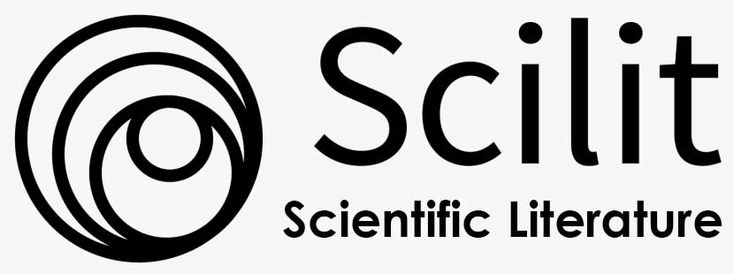EFFECTIVENESS OF CRAB SNARES IN LABORATORY-SCALE TRIALS
Abstract
The phenomenon of missing fishing gear during operation (Ghost fishing or Abandoned, lost or otherwise discarded fishing gear (ALDFG) becomes one of the serious problems in passive fishing gear. It's still a challenge and consensual for researchers to find the solution to solve this issue. This research is a steps of efforts to overcome it by using crab snares construction that has been used for recreational fishing activities. Crab snares consists of bait components and snaring rope. The research step consists of designing trap construction; selecting materials; building fishing gear; and conduct laboratory-scale trials. Then calculations of the effectiveness of the snare to catch crabs at various sizes. Observations during laboratory trials show that crab snares are capable of catching various sizes of crabs. Furthermore, the crabs caught were categorized into small, medium and large size groups based on their carapace width. analysis results of the effectiveness of catching snares show the highest value is 94.6% for catching large crabs, in the second position the effectiveness value is 86.4% for catching small crabs and the lowest is for catching medium crabs the effectiveness value still reaches 84.6%.
Keywords
Full Text:
PDFReferences
Akbar, F dan Mukti, BH. KEANEKARA GAMAN KEPITING DI HUTAN MANGROVE DESA MUARA UJUNG KECAMATAN KUSAN HILIR KABUPATEN TANAH BUMBU SEBAGAI MEDIA PEMBELAJARAN. 2018. Jurnal Pendidikan Hayati. Vol 4. N0. 4 (2018)
Al-masroori, H. et al. (2004) ‘Catches of lost fish traps ( ghost fishing ) from fishing grounds near Muscat , Sultanate of Oman’, 69, pp. 407–414. doi: 10.1016/j.fishres.2004.05.014.
Butler, C. B. and Matthews, T. R. (2015) ‘Marine Science’, 72.
Eichensehr, J. 2007. Castable Crap Trap. United States Patent Application Publication
Hasaruddin, H. Bin and Mahendra, M. (2016) ‘LAMA PEREDAMAN PERANGKAP LIPAT YANG EFEKTIF UNTUK PENANGKAPAN KEPITING BAKAU ( Scylla sp .)’, (October). doi: 10.35308/jpt.v3i2.43.
Hia,et al. 2013. JENIS KEPITING BAKAU (Scylla sp.) YANG TERTANGKAP DI PERAIRAN LABUHAN BAHARI BELAWAN MEDAN. Journal of management of Aquatic resource Vol.2, No.3
Supriyadi, B., Gebang, D. I. and Cirebon, K. (2019) ‘PERBANDINGAN KUALITAS DAGING RAJUNGAN HASIL TANGKAPAN KEJER DAN’, 4(2), pp. 2–7.
Suprayudi, M. A., Takeuchi, T. and Hamasaki, K. (2004) ‘Essential fatty acids for larval mud crab Scylla serrata : implications of lack of the ability to bioconvert C18 unsaturated fatty acids to highly unsaturated fatty acids’, 231, pp. 403–416. doi: 10.1016/S0044-8486(03)00542-8.
Sururi, M. et al. (2014) ‘PERBAIKAN KONSTRUKSI BUBU ELVER SKALA LABORATORIUM Correction of Elver Trap Contruction in Laboratory Scale Oleh ’:, 5(1), pp. 67–78.
Susanto, A, Irnawati R & Yuliyanti D. PERBEDAAN JENIS UMPAN DAN WAKTU PENANGKAPAN KEPITING BAKAU (Scylla serrata) DENGAN BUBU LIPAT SKALA LABORATORIUM> Jurnal Perikanan dan Kelautan Vol. 4 N0.4:221-228
Wilcox, C. and Hardesty, B. D. (2016) ‘Biodegradable nets are not a panacea , but can contribute to addressing the ghost fishing problem’, 19, pp. 322–
Lyster, EF.1980. Crab Snaring Device. United States Patent.
Peterson, FN.1980. Crab Trap. United States Patent.
Pratiwi, R. BIOLOGI KEPITING BAKAU (Scylla Spp) DI PERAIRAM INDONESIA. Jurnal Oseana, Volume XXXVI No1 Tahun 2011:1-11
Purbayanto, A, Riyanto, M & Fitri, ADP. Fisiologi & Tingkah Laku Ikan Pada Alat Tangkap. IPB PRESS. ISSBN978-979-493-256-8
Yudha, DS et al. 2021. Karakteristik Karapaas dan Chela sebagai alat Identifikasi Fosil Kepiting (Decapoda:Brachurya) yang ditemukan di jawa.Jurnal Ilmu-Ilmu Hayati,Vol.6(1):32-43
Salim, G, Rachmawani D& Septian D. 2018. ANALISIS MODEL SIFAT PERTUMBUHAN DAN INDEKS KOMPOSISI KEPITING BAKAU (Scylla serrata) YANG BERASAL DARI PERAIRAN ESTUARIA KOTA TARAKAN. JURNAL BORNEO SAINTEK Vol.1 No.3
.
DOI: http://dx.doi.org/10.21776/ub.jeest.2021.008.02.7
Refbacks
- There are currently no refbacks.

This work is licensed under a Creative Commons Attribution 4.0 International License.







